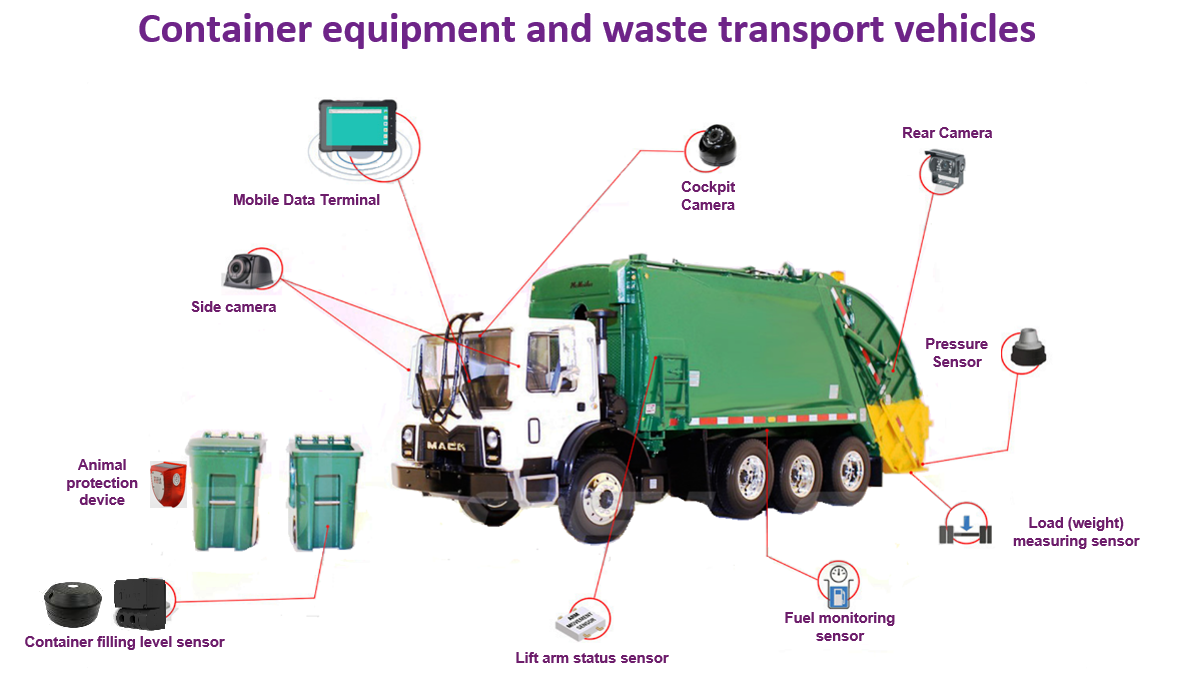Waste Management
Smart Waste Management Solution Benefits
Smart Waste Management Solution Benefits
The system enables the waste collection team to read waste levels in real time and receive waste collection notifications to avoid overflow of waste containers.
Dynamic Navigation
The system optimizes waste collection routes and creates schedules based on data and predictive analytics to pre-allocate waste containers that are expected to be filled quickly.
Minimize Cost
Smart waste management contributes to significantly reducing waste collection when the container filling rate is slow, which allows saving fuel, labor, vehicle operating time and improving the environment.
Asset Management
Tracking the location of containers using a locator located inside the waste level sensor, detecting fires or physical damage, and saving containers from theft or damage.
Fleet Management
The system monitors and analyzes the performance of cars and drivers in waste collection operations, fuel consumption, and braking patterns to reduce maintenance and operating costs for cars.

Smart Waste Management Solution Operation
Continuously monitor the level of waste inside the waste containers in real time.
Automated alarm to the contractor, suitable vehicle, and data center if waste level exceeds the critical level.
Optimal path planning for waste collection to reduce effort and cost as well as saving the environment.
Trucks receive tasks and routes on the map through a mobile application on the mobile data terminal.
Mobile application for waste producers (customers) to submit complaints about waste collection or any abnormal events and emergency incidents, and follow up their complaints status.
Smart Waste Management Solution Key Performance Indicators
Number of main streets that have not been cleaned
The rate of collection, unloading and transporting waste containers
Percentage of commitment to implementing operational plans
Speed of response to hygiene reports
Public satisfaction with cleaning operations
Task statistics by status (open - closed - scheduled - assigned) and during different time periods daily / weekly / monthly / yearly.
Statistics of reports and their open/closed/pending/escalated status at different periods daily/weekly/monthly/yearly
Report statistics by municipalities/locations
Task statistics by locations/observers
The number of vehicle drivers who do not adhere to the speed limits set according to the operational plan
The rate of vehicle drivers’ adherence to the speed limit on designated lanes
The number of vehicle drivers absent from work according to the operational plan




